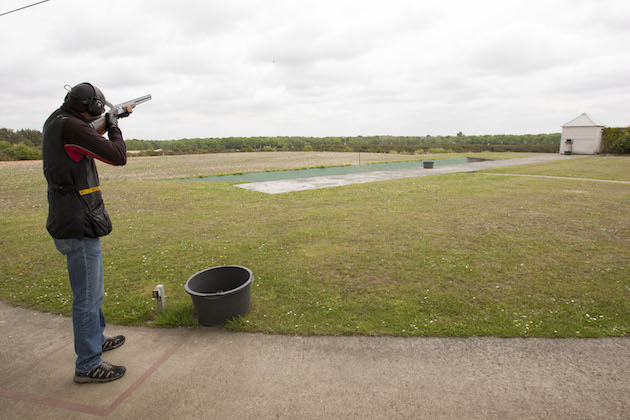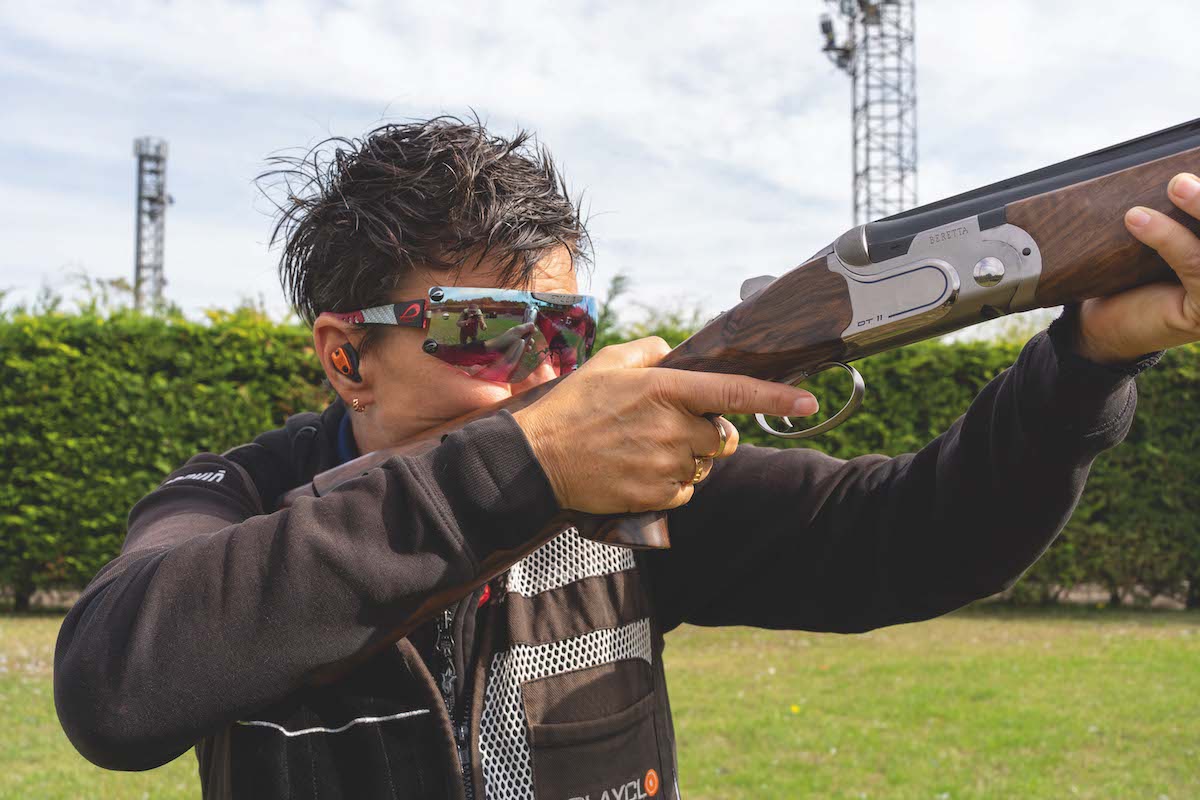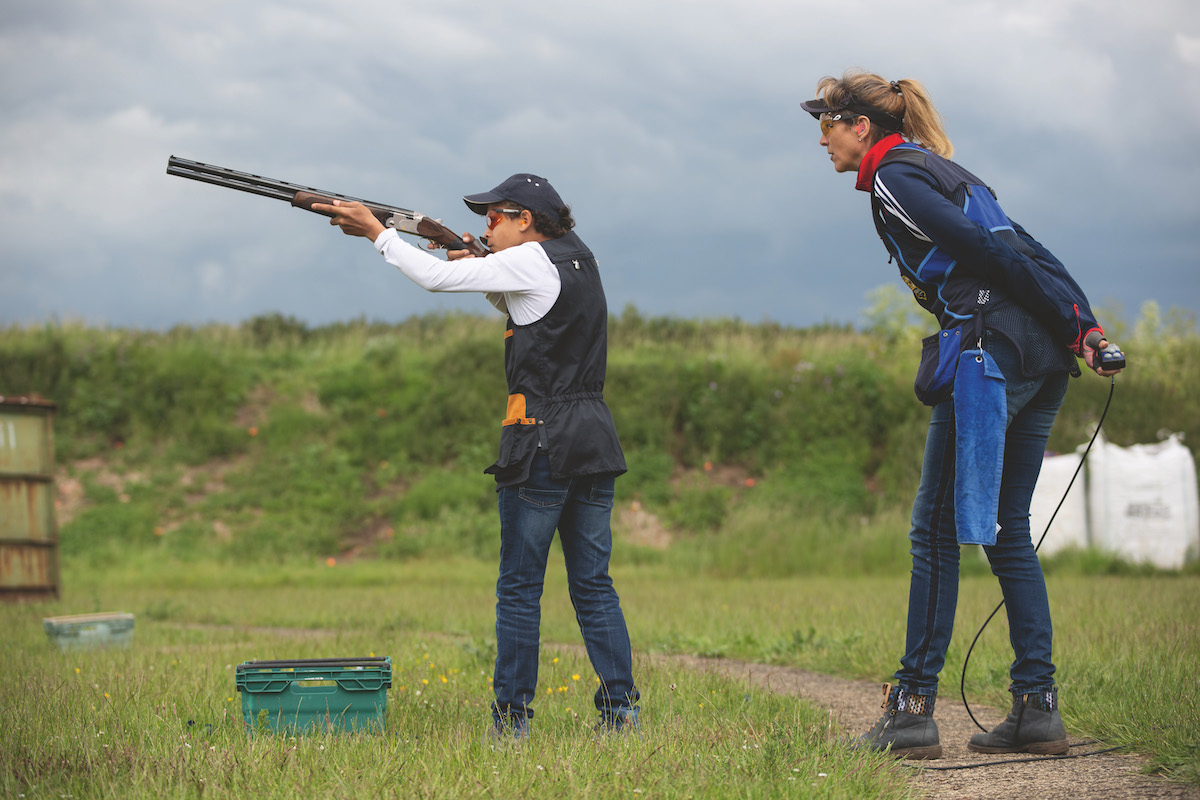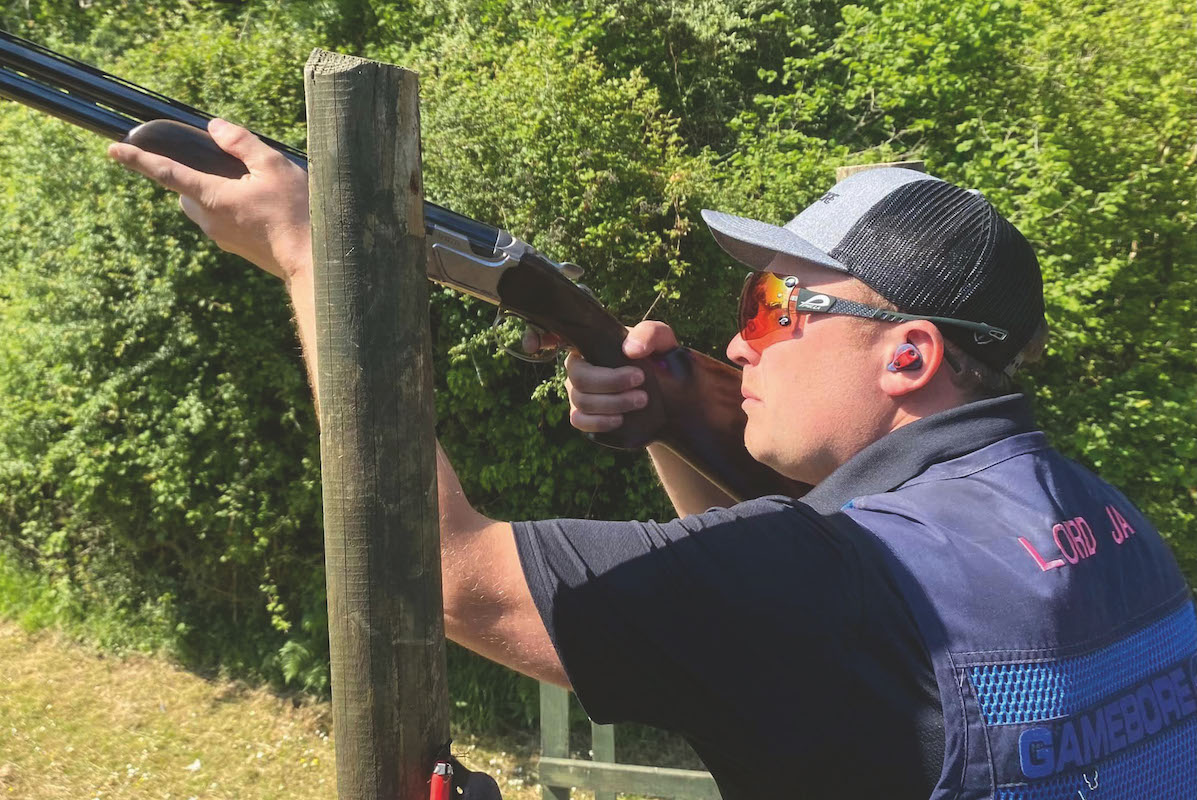Why skeet shooting is a sure-fire way to improve your shooting skills
David Turner explains how skeet shooting can transform your shooting performance

Skeet provides consistency, which is essential to learning
English Skeet shooting is one of the best disciplines you can shoot if you want to excel at the various forms of Sporting. That’s because it teaches you the absolute importance of correct stance and gun hold in relation to the target. It also demands total concentration and is a perfect way to hone your shooting skills. (Read what to wear clay shooting.)
Skeet shooting
Skeet offers a wide variation of angles with predictable target speeds and trajectories, which are important to help us learn and practice. While we need to develop the natural ability to shoot whatever is presented, we need consistency to learn.
The derivation of Skeet is said to come from the Norwegian word “skyte”, meaning shoot. During World War II the British and American militaries used it to teach gunners the principles of lead and forward allowance of a flying target. (Read our list of the best Skeet guns.)

A Skeet range features a high house, a low house and seven stands from where shots are taken
A skeet range can also be established in a smallish space. For those new to shooting, this drawing shows a Skeet range: a “high” house, a “low” house and seven stands from where the shots are taken. The targets are standard size and thrown to a distance of approximately 60 yards, crossing at a central point 22 yards from the shooter on the middle stand 4.
The history of Skeet shooting
Two American shooters, Charles Davis and William Harnden Foster of Massachusetts, are credited with inventing Skeet shooting in 1920. Both avid grouse hunters, they developed a game that was informally called “Shooting around the clock”. The original course took the form of a circle with a radius of 25 yards with its circumference marked off like the face of a clock and a trap set at 12 o’clock.
The practice of shooting from all directions had to cease, however, when a chicken farm opened next door.
The discipline evolved to its current set-up by 1923 when one of the shooters, Foster, solved the problem by placing a second trap at 6 o’clock and cutting the course in half. Foster quickly noticed the appeal of this kind of competition shooting and set out to make it a national sport. (Read more on the origins of Skeet shooting here.)

The single targets on a skeet layout are the closest you can get to recreating the flight of a pigeon
How to use Skeet for practice
Skeet is really all about “crossers” — targets adjacent to the shooter at various angles, depending on the shooting position. This helps us develop and use differing lead values at reasonable distances with consistency and predictability.
The stands number from left to right, with stand 1 at the high house, then numbering around a semi-circle as shown in the diagram, with stand 8 used for Olympic Skeet. In the UK we usually shoot the slightly kinder and slower version, English Skeet, and don’t shoot stand 8.
Where to start?
- For a right-handed shooter I find it best to start at stand 1, shooting only the targets from the low house, as this uses your more natural swing. As you move around the stands you’ll find that you will need to increase your lead.
- The average person will need to deliver a forward allowance or lead of 3ft to 4ft, depending on their gun speed. Once you move on to stands 5, 6 and 7 you’ll need to decrease the lead value as the angles decrease.
- Having arrived at stand 7, it is now a good idea to go back around the stands, only shooting the targets from the high house.
- If a target is tricky for you, stick with it; try different lead values or hold positions until you get the measure of it. Once you’ve got it, repeat it and practice. Please remember only “perfect practice makes perfect”.
- Once you are comfortable with single targets at the various stands, go on to “on-report” pairs, both ways round, starting on stand 1 and finishing on stand 7.
- One great advantage with modern grounds are the claymate-type systems, which will allow you to practice on your own using the delay function. It is still more fun and enjoyable with a friend.
What gun?
Though dedicated Skeet guns are available, your usual gun will be fine. After all, the targets are the same as used on every discipline of the sport. Those who only shoot Skeet tend to go for shorter barrels on the basis that there are faster handling. However, I shoot Skeet with my 32in, which works a treat and is a very “steady” gun, but the correct hold position is vital.
The minimum gauge size for English Skeet is .410 with the maximum being 12-bore firing a 1oz (28gm) cartridge.
What chokes?
More open chokes are my preferred option. The targets are mostly quite close and nothing is “rangy” at all. In my 32in I usually use Skeet and Skeet. I like to use the same chokes in both barrels because I don’t need to worry which barrel to select.
What cartridges?
Your usual clay cartridges are fine in No.71⁄2 and No.8 shot size, in 21g or 24g. As I’ve mentioned previously, there is no point in getting knocked about with heavier loads. Let’s make this easy and comfortable: 21g are more than adequate and will do the job very well, while being light on your shoulder.
Once you have improved your Skeet, then your sporting rounds will improve as a matter of course as many targets you will encounter will be similar to those on the Skeet range.
(Take a look at this list of the best clay shooting jackets.)
Smaller bore guns
If you enjoy using smaller bore guns, and lots of people do, then you might like to try your hand at shooting skeet under North American rules (NASSA) where you can compete against other people using .410s, 28, 20 and 12-bore guns.
It’s great fun to do so – and some of the scores achieved with even the smallest bores are quite incredible.
It’s a specialised form of Skeet shooting but you don’t have to go to the expense of owning a gun in each bore size to compete – you can buy balanced sets of different tubes to slip inside a 12-bore.
You can use high velocity (HV) cartridges if you want to but there’s no advantage in doing so at this form of shooting because most of the clays are broken inside 30 yards, and often less.
Furthermore, HV cartridges generally tend to be heavier on the shoulder and this can create fatigue in a shooter over a long day with, hopefully, a shoot-off for top spot at the end of it.
What you don’t want now is any mental tiredness or a sore shoulder… so stick to your ‘standard’ loads throughout.








